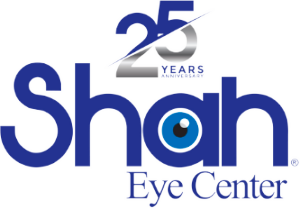Ensuring the health of your child’s eyes is crucial for their overall development and learning. Vision problems can significantly impact a child’s ability to grow, learn, and interact with the world around them. Understanding pediatric eye health, including key developmental milestones and common conditions, can empower parents to take proactive steps in preserving and enhancing their child’s vision. This article provides an overview of what parents need to know about pediatric eye health, from infancy through adolescence.
Understanding Vision Development in Children
Vision is a learned skill that develops from birth through the early years of a child’s life. The first few months are critical for establishing the basic visual abilities, such as focusing and tracking moving objects. By the age of six months, a child’s vision sharpens, enabling them to see more colors and start recognizing familiar faces. It’s during this period that parents should schedule their child’s first comprehensive eye exam to ensure their vision is developing correctly and to identify any early signs of eye conditions.
As children grow, their vision continues to develop. By the time they reach school age, their visual acuity should be refined, allowing for clear and detailed vision. This stage is crucial for academic performance, as learning is highly visual. Children who struggle with reading or show a lack of interest in visual activities may be experiencing vision problems that can hinder their learning and social development.
Common Pediatric Eye Conditions
Several eye conditions can affect children, some of which are more common in the early years. Amblyopia, known as lazy eye, is a condition where one eye is weaker than the other, leading to vision problems if not treated early. Strabismus, or crossed eyes, involves a misalignment of the eyes, which can also lead to amblyopia if left untreated.
Refractive errors, including myopia (nearsightedness), hyperopia (farsightedness), and astigmatism, are common in children and can significantly affect their ability to see clearly. Early detection through regular eye exams is essential for timely treatment, often involving glasses or contact lenses, to correct these errors and support healthy vision development.
The Role of Regular Eye Exams
Regular eye exams are the cornerstone of maintaining healthy vision in children. These exams allow eye care professionals to assess the development of a child’s vision, screen for common pediatric eye conditions, and provide early treatment if necessary. The American Optometric Association recommends that children have their first comprehensive eye exam at six months of age, followed by another at age three, and just before they start school.
For school-aged children, regular eye exams are crucial for detecting vision problems that could affect their academic performance. Vision issues can often be mistaken for learning disabilities. Regular screenings ensure that children have the visual tools they need to succeed in school and beyond.
Tips for Maintaining Healthy Eyesight in Children
Protecting your child’s eyesight involves more than just regular eye exams. Encouraging outdoor play can help prevent or reduce the progression of myopia. Ensuring a diet rich in eye-healthy nutrients, such as omega-3 fatty acids, lutein, and vitamins C and E, can support eye health. Additionally, limiting screen time and ensuring proper lighting during reading and homework can help prevent eye strain.
Educating children on the importance of not touching or rubbing their eyes and practicing good hygiene can prevent infections like conjunctivitis (pink eye). Wearing protective eyewear during sports and recreational activities can also prevent eye injuries, which are a leading cause of vision loss in children.
Navigating Vision Changes During Adolescence
As children enter adolescence, their bodies undergo numerous changes, and their eyes are no exception. This period requires continued vigilance in eye care, with regular exams to adjust prescriptions for glasses or contact lenses as needed. Adolescents may also express interest in contact lenses over glasses for cosmetic reasons.
It’s important to discuss this option with an eye care professional to determine if they are a suitable candidate for contacts and to educate them on proper lens care to avoid infections.

